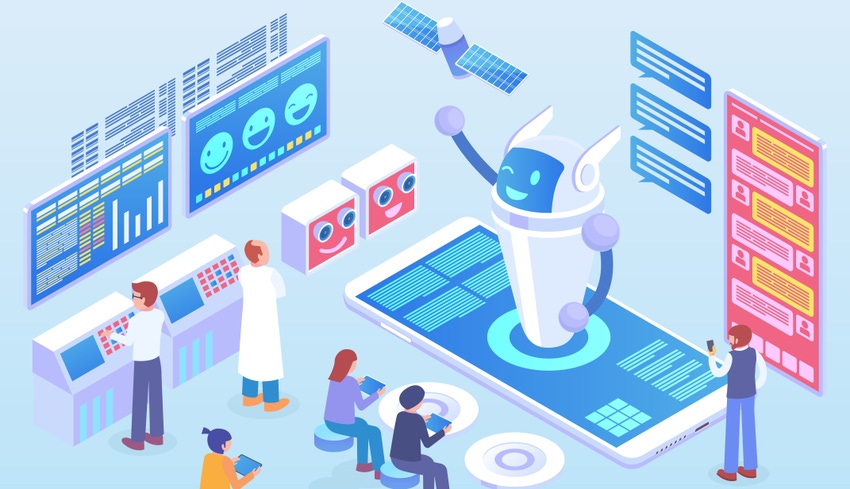From E-Commerce To C-Commerce: Conversational AI In 2019
June 19, 2019

LONDON - The growth of conversational AI technologies is undeniable. By 2020, over 80 percent of businesses are expected to have adopted chatbots or some level of conversational automation. Meanwhile, the consumer appetite for multi-platform, always-on conversational channels is high; 53 percent of customers are more likely to shop with businesses that they can message.
As conversational AI adoption grows both within enterprises and between customers and businesses, talk is growing of the birth of a new form of commerce: conversational commerce, or ‘c-commerce’ for short.

Andy Peart, CSMO of Artificial Solutions
To better understand where conversational AI is today, we sat down with Andy Peart, Chief Strategy and Marketing Officer of Artificial Solutions, creators of the conversational AI platform Teneo. Artificial Solutions are specialists in enterprise-grade conversational AI that recently launched Teneo Developers, which enables enterprise developers and partners to quickly develop and iterate conversational AI across multiple channels and 35 languages.
Related: AI isn't the future - it's here and now
Q: Hi Andy. How has the discussion around conversational AI changed in the past couple of years?
Several
things are changing in the market. Firstly, CIOs are wanting to take control of
their AI assets overall, but specifically, their conversational AI assets.
Up until
recently, different business units and innovation heads within an enterprise
would all be playing with different technologies and project-oriented
applications. There was little sharing of data or knowledge across functions,
and things like security and scalability were not even considered—let alone
delivered.
Now, we are
seeing CIOs buying into conversational AI, setting up centres of excellence or
incorporating it as a core technology within those centres, and looking for
platforms that have enterprise-grade capabilities and can allow them to build a
whole range of different point solutions under one platform.
Q: What do these trends look like in action?
What we’re
ultimately seeing is a real recognition of the value of conversational data. This
is taking place across four areas. Firstly, conversational data gives you an
unprecedented level of customer insight. It’s like having a focus group at your
fingertips. Not a focus group of twenty people for one hour, but more like a
focus group of a million people accessible 24/7. That’s an enormously valuable
assets if you can capture the conversation and interpret it.
The second element is that the need to personalize the customer experience using conversational AI is a key goal for CIOs. Machine learning techniques make it possible to listen and learn from the inputs across a conversational platform and recommend areas of improvement, as well as personalise responses on a dynamic basis.
The third
aspect is around improving data security and compliance. With GDPR, it’s
fundamental that you handle data correctly. We’ve put a lot of effort into
doing that, and it’s definitely becoming key criteria for the market.
Finally,
there’s the ability to use data to help scope out your projects. You can look
at what you are wanting to build, analyse the conversational data from a range
of sources, and use the results for your next major project.
Related: The AI Summit - Day two highlights
Q: Can you name any case studies as an example?
A: It isn’t just about whacking a virtual
assistant into a call centre to save a bit of cost. While we do get those
queries, primarily, organizations are focusing on conversational AI as a way of
fulfilling an element of a digital transformation project.
We are working with one of our customers, Shell, in their lubrication division. Here they’re focusing on the total cost of ownership. You can save 30-40% of overall lifetime costs by maintaining a vehicle correctly, which means you need the right sort of oil in your engine. This is more complicated than it sounds. Shell has 3000 different product lines, 2000 obsolete products, 31,000 competitor products, 100,000 datasheets, and a million different engine types—across 80 differnet countries in multiple languages. It layers up in terms of complexity.
A very intuitive way of making it easier for distributors and the public to access this information is through a conversational application, and that’s exactly what they’ve done. It also helps position them as a real innovator when it comes to AI. So that’s just one example of people using conversational AI not just at a very granular level, but in a much more strategic way as part of their overall digital transformation.
Related: How to implement a Brexit-busting AI strategy
Q: So where
is this being deployed within the enterprise, and which business functions are
seeing the biggest changes?
A: There are the obvious areas which are very customer-facing and service-oriented. Digital employees for customer service is a classic area in which conversational AI is being deployed. Increasingly, it’s being used proactively as a sales tool to provide support on e-commerce sites—to the point where there is increasing talk about conversational commerce, or ‘c-commerce’, overtaking e-commerce in the next decade in terms of interest. People are going to buy things through Alexa and Google Home using voice rather than going on the website, so you need a conversational system to be able to support that.
Interestingly,
though, we are also seeing a large uptick in internally-facing systems. For
example, HR is a growing area for us because the sorts of clients we’re receiving
tend to be larger enterprises with complex HR requirements. For example, we’re
working with a major bank with a very transient workforce that constantly moves
between the US and Europe. There’s a lot of time-consuming queries for HR
personnel who typically don’t have a contact centre to answer questions about
holiday entitlement or the like. While reasonably complex, these rules and
responses can be pretty easily automated.
Q: What are
your predictions for the next year in conversational AI?
A: I think that we’re increasingly going to see conversational AI platforms being incorporated into centres of excellence within enterprises. C-commerce will become something that’s more actively talked about. 2019 and 2020 will be the years of the conversational platform because it’s becoming such a requirement now for enterprises.
Andy Peart is Chief Strategy and Marketing
Officer of Artificial Solutions.
About the Author(s)
You May Also Like


.jpg?width=700&auto=webp&quality=80&disable=upscale)
.jpg?width=700&auto=webp&quality=80&disable=upscale)
.jpg?width=700&auto=webp&quality=80&disable=upscale)



.jpg?width=300&auto=webp&quality=80&disable=upscale)
